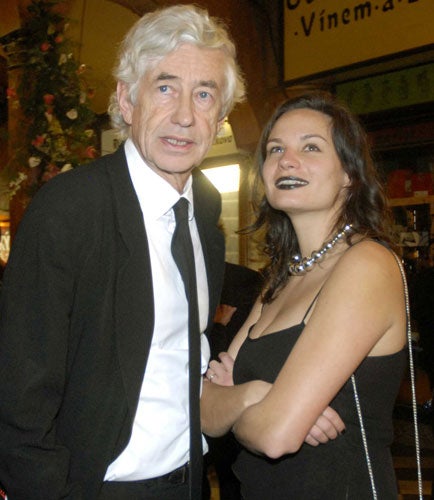Architect dies hours after his wife gives birth
Tributes paid to Jan Kaplicky, designer behind string of futuristic landmarks

Jan Kaplicky, the renowned architect who designed a host of futuristic landmarks including the aluminium Selfridges store in Birmingham, the Maserati museum in Modena and the "floating" bridge in Canary Wharf, London, died hours after the birth of his daughter, it emerged yesterday.
Tributes from architects around the world poured in after the news broke of his unexpected collapse and death on a street in Prague at age 71.
His second wife, Eliska Fuchsova, a Czech film producer who he married in 2007, gave birth to their daughter, Johana, on Wednesday afternoon, shortly before he died.
Jirina Ernestova, a spokeswoman for Prague's rescue service, said rescue workers attempted to resuscitate Kaplicky for 30 minutes. The cause of his death was not immediately known.
The architect also had a son, Josef, from his first marriage to the British architect, Amanda Levete. The pair divorced in 2006.
Norman Foster, who worked with Kaplicky, hailed him as a "great architect" and said: "I am shocked and devastated. Jan was a great architect, valued colleague and good friend."
Born in Prague in 1937, Kaplicky studied at the College of Applied Arts and Architecture in the Czech capital. He moved to London in 1968 after the Soviet-led invasion of Czechoslovakia. In 2004, he said of his departure: "I realised: the time has come, you can't stay here because there's absolutely no hope in your lifetime."
One of the most uncompromising architects of his generation, he first joined Denys Lasdun's office, where he worked on the National Theatre in London, then collaborated with Richard Rogers and Renzo Piano on the design of Paris's Pompidou Centre.
He then moved to Norman Foster's fledgling practice before establishing his own firm in 1979, called Future Systems to reflect his interest in sci-fi aesthetics and high technology. The company's design for a new media centre at Lord's cricket ground was awarded the Stirling Prize in 1999.
A year earlier, Kaplicky and Levete designed an underground home in the Pembrokeshire hills for the Labour MP Bob Marshall-Andrews. Their own home became a test-bed for their radical ideas. They also designed champagne buckets for the Ivy restaurants and coat hangers for Marni, the Italian fashion house.
In 2007, Future Systems won an international competition to design a new home for the Czech National Library, It would have been Kaplicky's first building in his homeland. But the design's octopus-like shape caused uproar and divided the public. President Vaclav Klaus and Prague Mayor Pavel Bem opposed it. It is not clear if the project will materialise.
Peter Cook, the recipient of a gold medal from the Royal Institute of British Architects, said: "I had tremendous admiration for him. He was one of the most exciting architects in town. I think his reputation will increase. And we'll realise that he was very, very special and ahead of his time."
The critic and author Ken Powell said Kaplicky was a visionary and irreplaceable. "He was an extraordinary character and inventive thinker."
Subscribe to Independent Premium to bookmark this article
Want to bookmark your favourite articles and stories to read or reference later? Start your Independent Premium subscription today.

Join our commenting forum
Join thought-provoking conversations, follow other Independent readers and see their replies